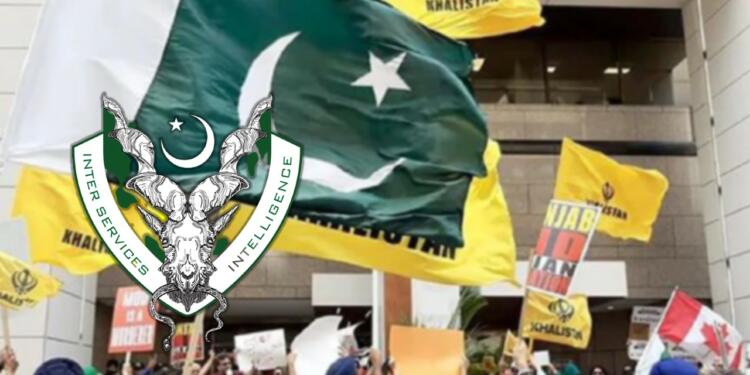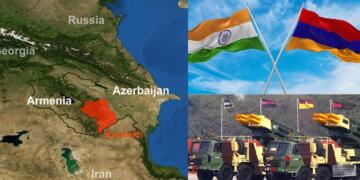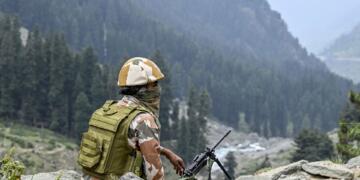Pakistan’s updated national security policy was published recently. It outlines the Pakistani regime’s perception of the regional security landscape and dangers to Pakistan’s national security. India is mentioned frequently in the text, serving as a helpful reminder of Pakistan’s perspective of the threat posed by its eastern neighbour.
The text also states that Pakistan’s geostrategic orientation will be anchored by geoeconomics. But Islamabad’s geoeconomic objectives are already doomed due to its deteriorating economic fortunes, lack of access to the markets in Central or South East Asia, and growing indebtedness to China. But there is only one plan that has comparatively played fairly into the hands of Pakistan’s deep state, and that plan is the Khalistan issue.
Divided Pakistan— A boon for India
It is critical to understand that Pakistan has two poles of power: the military establishment — the deep state — which is far more powerful than the so-called democratically elected government. From time to time, the world has witnessed the fractures between the two power centres, the most recent being Imran Khan versus the military and the ISI. The infighting between the different power centres in Pakistan benefits India as a stable Pakistan is a threat to India, as a stable leadership in Pakistan focuses on destabilising India by using different tactics.
Also read: Jail? Outside Punjab? Free? Where is Amritpal Singh?
Pakistan’s different tactics to destabilise India
Since India’s independence, Pakistan’s aggression in Jammu and Kashmir and along the border has kept the country’s security apparatus busy. As was evident throughout the ensuing conflicts in 1965 and 1971, New Delhi firmly met this challenge with its conventional military strength.
In the 1980s, the Pakistani military actively supported separatist uprisings in J&K and Punjab, and later assistance for anti-India terrorist organisations like Lashkar-e-Taiba (LeT) and Jaish-e-Mohammed (JeM) encouraged what Christine C. Fair called “jihad under the nuclear umbrella.” By doing this, Pakistan made sure that the Indian security apparatus was still aware of the terrorism issue.
The Indian security establishment has historically been risk-averse when it comes to countering Pakistan’s cross-border terrorism. Its main worry was the possibility of an escalation and nuclear exchange brought on by India’s military reprisal. According to Shivshankar Menon, then-foreign secretary and later national security adviser, military reprisal was seriously discussed by Indian authorities in the wake of the 2008 Mumbai bombings but eventually rejected.
But Pakistan’s establishment has understood that it cannot win against India through conventional means, so it has started devising tactics to destabilise India indirectly. The major policy that came to light was “Bleed India through 1000 cuts.” This policy of Pakistan lets it meddle in India’s internal security apparatus without having blood on the hands of Pakistan’s army. For a long time, Pakistan has engaged in cross-border terrorism against India, and it has been quite successful in the past.
Also read: Khalistanis’ Fatal Mistake: Disrespecting Sardar Bhagat Singh
However, as the attacks have been more severe recently, India has abandoned its defensive posture, made possible by the political determination to take risks. The Indian security establishment showed that it is willing to call Pakistan’s bluff on nuclear escalation by carrying out a “surgical strike” in response to a terrorist assault (September 2016) and an airstrike on Balakot (February 2019). Also supporting India’s calculations was Pakistan’s absence of meaningful retaliation for its activities. The response to future cross-border terrorist acts has now been established.
It’s possible that India’s military response served as a deterrent to future Pakistani behaviour. In any case, terrorist organisations operating in Pakistan now need to plan their future assaults taking into account the possible military response from India. So, Pakistan again opened Playbook 101 of destabilising India and pulled out its age-old card—separatism in Punjab. The Khalistan issue has been a burning issue in India as it has claimed the lives of hundreds of civilians, khalistani separatists, a sitting chief minister, and most importantly, the incumbent prime minister of India.
Also read: Oh!! Shut up Jagmeet Singh
The revival of Khalistan
Pakistan’s state actors and non-state actors have been desperately attempting to revive militancy in Punjab in the wake of the political instability in Punjab caused by internal conflicts in the former ruling Congress party, which propelled a relatively new and inexperienced government of the “Aam Aadmi Party”.
With the help of Pakistan’s ISI, anti-Indian groups were able to resurrect the Khalistan narrative by promoting a religious and fundamentalist agenda and disseminating false information, much like they did during the farmers’ agitation to incite the youth of Punjab.
A three-day annual police meeting (New Delhi, January 2023) stated that attempts to resurrect the militancy in Punjab have increased since 2015, with the majority of the culprits being headquartered in Pakistan or western nations. It also mentioned how the diaspora in the United States, Canada, the United Kingdom, and other European countries were radicalising Punjabi youth. According to a Hudson Institute report, pro-Khalistan organisations operating in the West and allegedly supported or funded by Pakistan’s ISI pose a threat.
Ajnala police station near Amritsar was the scene of a scuffle between Amritpal Singh’s radical supporters and the police on February 23. Amritpal Singh, who is the self-styled Chief of the pro-Khalistani group ‘Waris Punjab De,” instigated the mob to attack the police station. Additionally, reports that Amritpal Singh is receiving funds from the Pakistani ISI and other foreign entities in order to portray him as “Bhindranwale-II” have raised red flags inside the Indian security establishment. It’s significant to note that Amritpal’s radical and anti-India narrative even found some limited success among Punjab’s radical elements.
The second generation of Sikhs living abroad, who had little real-life experience living in India, lacked knowledge of the country’s cultural richness and interreligious peace. They were raised on the politically motivated propaganda about injustices and massacres that Sikhs endured in India during the separatist movement, which was created by Sikh extremist leaders and the ISI. The misleading propaganda apparatus also lives on the myth that the Indian state is still persecuting Sikhs in India today.
Also read: Decoding Bhagwant Maan’s quick action against Amritpal and the inherent Shah angle
They are participants in terrorist groups that have been banned, including Babbar Khalsa International (BKI), Khalistan Commando Force (KCF), and the International Sikh Youth Federation (ISYF). Babbar Khalsa’s desire to use terror and violence to create an independent Sikh state was plainly declared in the US’s National Counter-Terrorism Strategy, which was unveiled in October 2018.
After the Sikh insurgency in Punjab was crushed, the aforementioned organisations primarily engaged in covert operations.The Khalistan movement, however, has reemerged since 2015. The revamped version of the Khalistani campaign now has a significantly more powerful Sikh diaspora providing logistical support. In addition to the traditional Khalistani network, it consists of groups like the SFJ and the Poetic Justice Foundation (PJF), which was established in Canada.
About 20 instances, including the assassinations of Rashtriya Swayamsevak Sangh (RSS) and Hindutva leaders and assaults on Sikh preachers, have been connected to Khalistan separatists in the last six years. These assaults are carried out to foment discord in Punjab.
Pakistan’s backing of Khalistani extremists involves using extremists based in Canada and some other nations, including those with ties to terrorism, while the cause of the Khalistanis has little support in Punjab. The Pakistani administration is attempting to create a coalition of Sikh extremist groups, Pakistan-based Islamic organisations, and terrorist organisations with a focus on Kashmir in a bid to harm Indian interests.
When we see Pakistan’s strategies in the past, one can conclude that Pakistan is short of tactics to use to harm India, but its Khalistan revival has proved to be successful in gaining traction all over the world. Most importantly, the Indian state has failed to point towards Pakistan on the global stage even after knowing that the major funding and backing is coming from Islamabad.
The Indian establishment was successful in the past —during the Rajiv Gandhi era— in destroying the Khalistan-ISI nexus, which was operating in the US and UK. It will now be nail-biting to see how the Modi government in India deals with this issue in these critical times.
Support TFI:
Support us to strengthen the ‘Right’ ideology of cultural nationalism by purchasing the best quality garments from TFI-STORE.COM


































